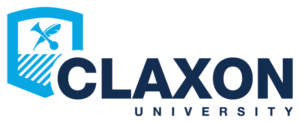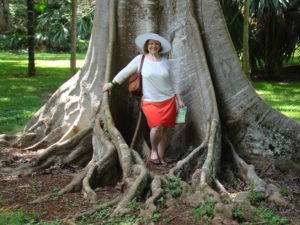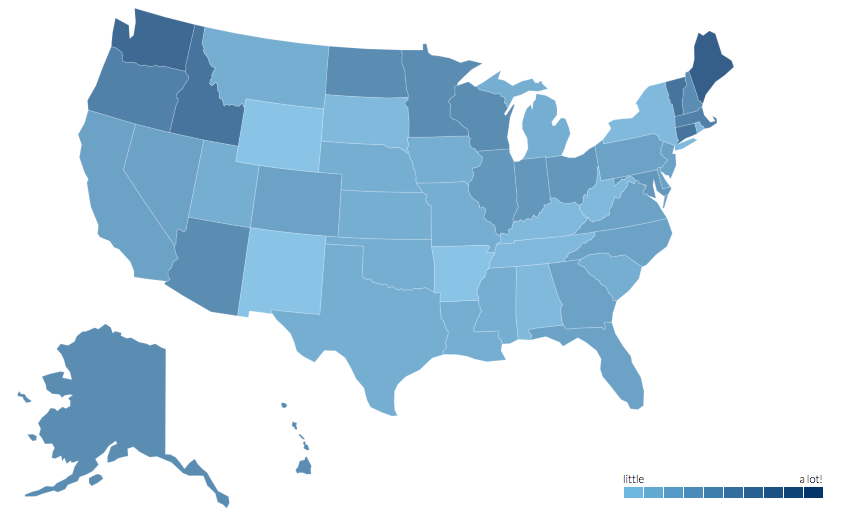 The Seattle Public Library recently went through (or at least tried to go through) a rebranding extravaganza. Unfortunately, it didn’t go very well. They fell prey to some of the most common mistakes nonprofits make when rebranding. Fortunately, all the mistakes the Library made are avoidable, so there’s no need for history to repeat itself.
The Seattle Public Library recently went through (or at least tried to go through) a rebranding extravaganza. Unfortunately, it didn’t go very well. They fell prey to some of the most common mistakes nonprofits make when rebranding. Fortunately, all the mistakes the Library made are avoidable, so there’s no need for history to repeat itself.
To be clear, I’m not questioning whether or not the Library should rebrand. Anytime a nonprofit rebrands, that’s a decision for the board to make. Have I helped nonprofit boards make that decision? Yes, many, many times. But even in my capacity as “expert consultant”, it isn’t my decision. It’s theirs. So let’s set that question aside.
There really were quite a few missteps in the Library’s rebranding efforts. I want to focus on two in particular as they are two of the most common and most harmful: 1) writing by committee and 2) soliciting input at the wrong point in the process.
#1 Writing by committee
This effort was about rebranding a library. As my graduate students learn, branding is about bringing the visual, narrative and experiential elements of your brand into alignment. So the visuals matter. But given the organization–a library–and the organization’s customers—library patrons—the words are going to matter. A LOT.
Given the importance of words to this particular rebranding effort, when you put out the following “brand statement” for input, you’re going to get flack.
The Library provides access to knowledge, experiences and learning for all. We preserve and create opportunities for the people of Seattle who make it such a dynamic and desirable place to live. When we’re empowered as individuals, we become STRONGER TOGETHER.
So many problems with this statement, where to start?
First, what is a “brand statement”? When people hear the word “statement” in relation to nonprofits, e.g. mission, vision, values statements, the default is that it’s for external stakeholders, e.g. donors, clients, patrons. Unless the Library says otherwise, this will be the filter through which people assess the statement. They will be looking for something that makes them say, “Yes, yes, yes, that’s why I love the library soooooooooooooooooooooo much!!!!” Needless to say, this statement doesn’t elicit that reaction. Quite the contrary.
Second, what are they even saying?! Running it through the Flesch Reading Ease index, we learn the reading is only 46.4. So you can understand some of it. Kind of. But if this statement is meant to succinctly, yet compellingly, sum up what the Library is all about, it needs to be super easy to understand.
Knowing the purpose of the “brand statement” would inform how big an issue the low readability really is. If it’s a guide for internal decision-making, it’s less of an issue. But if that’s the case, then why ask external stakeholders to take a survey and give you input on it?
Third, there’s the writing itself. It’s not good. It’s the Library. The writing matters. Christopher Frizzelle over at The Stranger channeled his inner Steven Pinker and did a fantastic job dissecting the brand statement’s many fatal language flaws (including the lack of a serial comma—ack!). So rather than rehash those, I’m going to focus on two issues he didn’t mention: verbs and length.
Verbs: Based on Claxon’s research on nonprofits and language usage, we know that the top three content verbs used by nonprofits are:
- Support
- Make
- Provide
It is disappointing that an institution known for words didn’t avail itself of the many marvelous verbs in the English language. Instead, they positioned themselves with the preponderance of other nonprofits. As a library, it’s imperative you use words to differentiate yourself. A better verb is out there.
In order to find their verb, the question they need to answer is: What does the Library fundamentally want to be known for?
If it’s no longer just about the books, fair enough. But this statement doesn’t give an alternative. It give alternatives (plural). Is it educating? Preserving? Creating? Empowering? Becoming stronger? Being together?
And this is how we know that writing-by-committee happened. When I work with nonprofits and see things like this brand statement, it is a huge red flag for me. It screams, “As a committee, we had lots of discussion about all this and we winnowed it down a bit, but the truth is, we’re still grappling to really land on what we want to be known for, so we’re just going to list them all and hope for the best.” You can hope all you want, but the statement isn’t going to give you a happy ending.
Length: If you can’t sum up what your organization (or, in this case, brand), is fundamentally about in ten words or less, you’ve still got work to do. Not on the words, per se, but on the strategy that those words are tasked with communicating.
This statement is 41 words.
I can already hear the roar, “But Erica, ten words is preposterous. Our work is so much more complicated than that.” True…and so is the work of almost every nonprofit on the planet. Blaise Pascal famously said, “I would have written you a shorter letter, but I didn’t have the time.” Shorter is harder. It forces you to prioritize. It demands clarity and precision. The more words, the muddier.
Maybe the Library’s strategy is clear as Snow White’s skin, and the issue is in succinctly translating it. But this brand statement leaves one wondering where the books went and what has replaced them exactly.
How can you avoid these mistakes? By not allowing writing-by-committee. Things get hodge-podgy really quickly when everyone is adding their two cents to the mix. Be clear from the get-go about who is an inputter and who is a decision-maker. As the name implies, inputters give their input on what the statement (or whatever you’re writing) should convey. The decision-makers should then be left to decide which combination of verbs, nouns, adjectives, etc can do that most effectively. Ideally, you’d have no more than three decision-makers. More than that and, well, see the “brand statement” above for what that gets you.
Mistake #2: Asking for input at the end of the process
Don’t. Don’t ask people—smart, devoted people, e.g. library patrons—to give a thumbs up or down on logos, new names, and brand statements. Ask their opinion at the beginning of the process. Then show them see what you did with their input at the end.
Nonprofits are inclusive by nature. It’s tempting to ask for input at the end. You’ve worked hard. You want people to be excited, just like you are.
This is the same as sharing the name you’ve chosen for your baby before it’s born. If you tell someone that you’re thinking of naming your son Steve, you’ll get comments like, “I dated a guy named Steve once. He was a jerk.” Um, okay. Relevance? None. Or maybe you’re fond of the name Rachel. “All the Rachels I’ve ever known have been snotty.” Again, relevance? None. Absolutely, positive none. But you put it out there, so people gave you their (irrelevant to your decision about the name) opinion.
But what happens if you wait until after the baby is born? You get an entirely different reaction. When you have the baby and then proudly say, “Meet my son, Steve.” Well, then people are happy for you. They comment on his adorable nose and teeny tiny fingers. They murmur things like, “Steve, such a calming name. It’s adorable. Just like he is.” Nary a jerk to be found.
It’s the same with names, taglines, and logos. If you say, “What do you think?” before making a final decision, people are going to try to be “helpful”. They’re going to think of all the ways in which that name or logo or tagline might come back to haunt you. Not because they’re being rude or mean. But because that’s what you’ve basically asked them to do. Poke holes. The responses you get will be riddled with personal opinion (how could they not be?), rather than giving you actionable feedback that will help you make a decision based on the strategic criteria you developed to objectively assess the efficacy of the name, logo, tagline, etc.
And that’s no good for anyone.
In the case of the Library, had they asked for input early on in the process, they could have let them know why they stuck with the singular “library” or changed it to “libraries”. They could have referenced what they learned and heard from folks, and how they factored that in. But do not ask which one “evokes the value of value of communities”, as the Library did in its survey. What does the “value of the community” mean? Likely something different to everyone. So how can that be useful information? It is personal opinion, which isn’t helpful when you’re making strategic decisions for an organization.
Asking for input on such a tiny name change was especially inadvisable when everyone knew the Library had spent $365,000 to make such a seemingly tiny, unremarkable change. It might be a fine idea to change to ‘Seattle Public Libraries’. I can see many, many reasons for doing so. If there are strategic reasons for the shift, then venture forth and do it. No one is going to be up-in-arms about going from singular to plural. They’re up-in-arms that you spent money on what now seems like a ho-hum, anyone-could-have-told-you-that change.
I’m not saying to not get input. Au contraire, get TONS of input. Oodles of input. The more input the merrier. So long as you get it at the beginning of the process. Then take that input, develop strategic criteria, come to decisions, thank people (genuinely thank them) for taking time to inform the process, and let them know the outcome.
Bottom Line
The Library is in a pickle. They clearly want to make a change. And probably should. The logo and website feel dated, and out-of-sync with all the Library offers. But now they will have to go back to the drawing board because if they use anything they’ve floated so far, patrons won’t just be up-in-arms, they’ll forge a full-on mutiny. They have a lot of clean-up to do. They’ll need to regroup.
Next time around (if there is a next time), I’d encourage the Library to do what I’d encourage any nonprofit to do that is embarking on a rebranding effort:
- Be crystal clear from the beginning about roles and responsibilities
- Don’t allow writing-by-committee
- Get tons of input…at the beginning of the process
I love the Library. I really, truly hope they find their rebranded happily ever after.
Post Readability Stats: Reading Ease: 67.9, Grade Level 6.6









 Class is in session.
Class is in session.